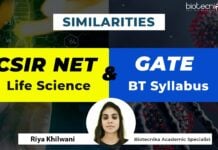Method To Separate Tumor Tissues
A dense web of tissue can surround tumors in the pancreatic origin, hamper treatment, and sometimes acts as a barrier to the tumor’s spread.
Scientists want to distinguish cancerous tissue from the surrounding connective tissue and cells known as stroma as well as from immune cells in the tumor’s environment to drive personalized treatment strategies.
The University of North Carolina Lineberger Comprehensive Cancer Center researchers reported that they have designed a computational method for separating the different tissues in a particular sample.
Method To Separate Tumor Tissues- The Study
Jen Jen Yeh, MD, professor of pharmacology and surgery in the UNC School of Medicine, said that the team of researchers developed a way to determine what cellular compartments make up a tumor by deconstructing the tumor’s genomic data. Prof Jen is the vice-chair for research in the Department of Surgery.

Researchers described the new method for separating tissue in a sample, called as DECODER. Using multiple cancer tissue samples from The Cancer Genome Atlas, they showed that DECODER could differentiate the standard signals across tumors. Also, the researchers used DECODER to deconstruct samples of pancreatic
ductal adenocarcinoma- the most common type of pancreatic cancer. This allowed them to see the signals from compartments of immune, tumor, or stroma.Method To Separate Tumor Tissues- Applications of DECODER
Ultimately, the goal of the researchers is to separate the tissue to further understand the unique biology of a patient’s tumor, as well as the tissue that surrounds cancer.
In her previous study, Prof Yeh and her team found the composition of the environment around a tumor is linked to treatment response. In a study published in Nature Genetics in 2015, scientists analyzed how genes are expressed in both the tumor and the stroma and found there are two types of tumor, and two types of the stroma.
The researchers believe that DECODER has several other applications- including applying their tissue separation method in other tumors to help understand cancer and it’s microenvironment. Prof Yeh and her team are also planning to study whether DECODER can help them identify cancer for patients that have a tumor of unknown origin.






























